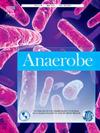Exploring benzene mineralization by anaerobes isolated from denitrifying enrichment cultures
IF 2.6
3区 生物学
Q3 MICROBIOLOGY
引用次数: 0
Abstract
Objectives
The study aimed to isolate and characterize benzene-mineralizing anaerobes from a nitrate-reducing community. The goal was to evaluate their potential for benzene degradation under anoxic conditions and to compare composition and metabolic activity in media with and without ammonium.
Methods
Two putative isolates (Bz4 and Bz7) were obtained using classical isolation techniques under nitrate-reducing conditions with either acetate or benzene as the sole carbon and energy source. Enrichment media differed by the presence (Bz4) or absence (Bz7) of ammonium. The ability of the isolates to mineralize [13C]-labeled acetate and [13C6]-labeled benzene was assessed by monitoring 13CO2 production under anoxic conditions over 184 days. Nitrite production was also measured. Community composition was determined via 16S rRNA gene amplicon sequencing.
Results
Both Bz4 and Bz7 consortia mineralized [13C]-acetate anoxically, with mineralization rates of 3.3 μM day−1 and 2.7 μM day−1, respectively. Benzene mineralization was observed only in Bz4, which degraded [13C6]-benzene at a rate of 0.298 μM day−1, resulting in 13CO2 production with δ13C values reaching 960.2 ± 0.3 ‰. Bz4 also produced nitrite (4.60 ± 0.004 μM), while Bz7 showed no benzene mineralization with a smaller quantity of nitrite production. Microbial community analysis revealed that Bz4 was dominated by Allorhizobium-Neorhizobium-Pararhizobium-Rhizobium (51.4 %), Rhizobiaceae (21.0 %), Pseudomonas (18.2 %), and Nocardioides (8.9 %). In contrast, Bz7 was almost exclusively composed of Simplicispira (96.7 %).
Conclusions
The Bz4 consortium demonstrated effective anaerobic benzene mineralization under nitrate-reducing conditions, highlighting its potential for further purification and study in the context of anaerobic benzene biodegradation.
利用反硝化富集培养分离的厌氧菌探索苯矿化。
目的:本研究旨在从一个硝酸盐还原菌群中分离和鉴定苯矿化厌氧菌。目的是评估它们在缺氧条件下降解苯的潜力,并比较其在含铵和不含铵培养基中的组成和代谢活性。方法:在硝酸还原条件下,以乙酸或苯为唯一碳源和能量源,采用经典分离技术分离得到两株菌株Bz4和Bz7。不同的富集介质存在(Bz4)或不存在(Bz7)铵。在184天的缺氧条件下,通过监测13CO2产量来评估分离物矿化[13C]标记乙酸和[13C6]标记苯的能力。测定了亚硝酸盐的产量。通过16S rRNA基因扩增子测序确定群落组成。结果:Bz4和Bz7菌群缺氧矿化[13C]-乙酸,矿化速率分别为3.3 μM day-1和2.7 μM day-1。苯矿化仅发生在Bz4中,Bz4对[13C6]-苯的降解速率为0.298 μM day-1,产生13CO2, δ13C值达到960.2±0.3‰。Bz4也产生了亚硝酸盐(4.60±0.004 μM),而Bz7没有苯矿化,产生的亚硝酸盐量较少。微生物群落分析显示,Bz4以异根菌-新根菌-副根菌-根瘤菌(51.4%)、根瘤菌科(21.0%)、假单胞菌(18.2%)和Nocardioides(8.9%)为主。相比之下,Bz7几乎完全由Simplicispira组成(96.7%)。结论:Bz4联合体在硝酸盐还原条件下表现出有效的厌氧苯矿化,表明其在厌氧苯生物降解方面具有进一步纯化和研究的潜力。
本文章由计算机程序翻译,如有差异,请以英文原文为准。
求助全文
约1分钟内获得全文
求助全文
来源期刊

Anaerobe
生物-微生物学
CiteScore
5.20
自引率
8.70%
发文量
137
审稿时长
76 days
期刊介绍:
Anaerobe is essential reading for those who wish to remain at the forefront of discoveries relating to life processes of strictly anaerobes. The journal is multi-disciplinary, and provides a unique forum for those investigating anaerobic organisms that cause infections in humans and animals, as well as anaerobes that play roles in microbiomes or environmental processes.
Anaerobe publishes reviews, mini reviews, original research articles, notes and case reports. Relevant topics fall into the broad categories of anaerobes in human and animal diseases, anaerobes in the microbiome, anaerobes in the environment, diagnosis of anaerobes in clinical microbiology laboratories, molecular biology, genetics, pathogenesis, toxins and antibiotic susceptibility of anaerobic bacteria.
 求助内容:
求助内容: 应助结果提醒方式:
应助结果提醒方式:


